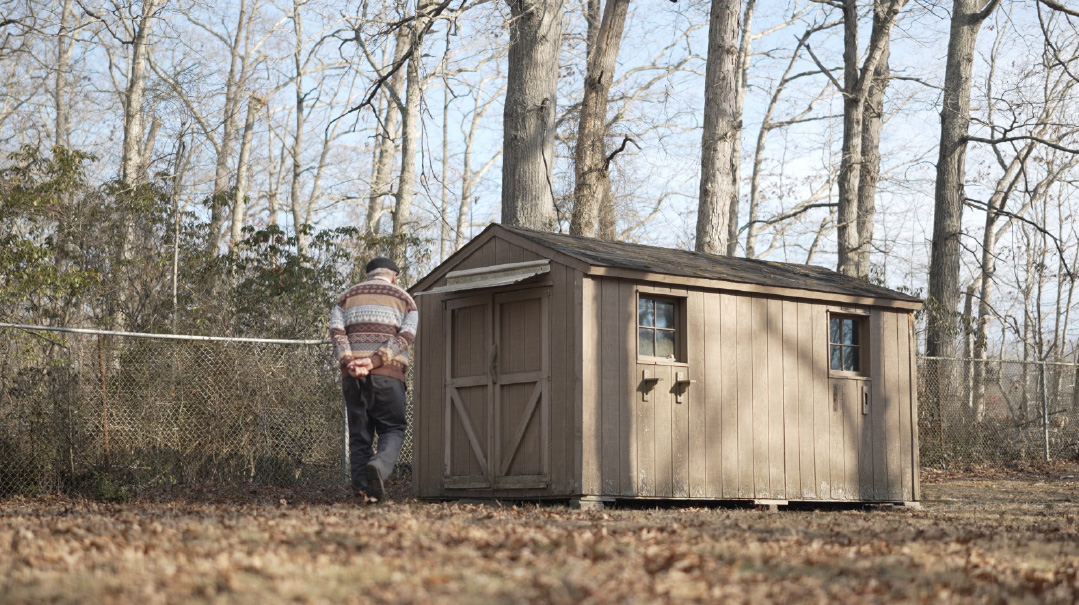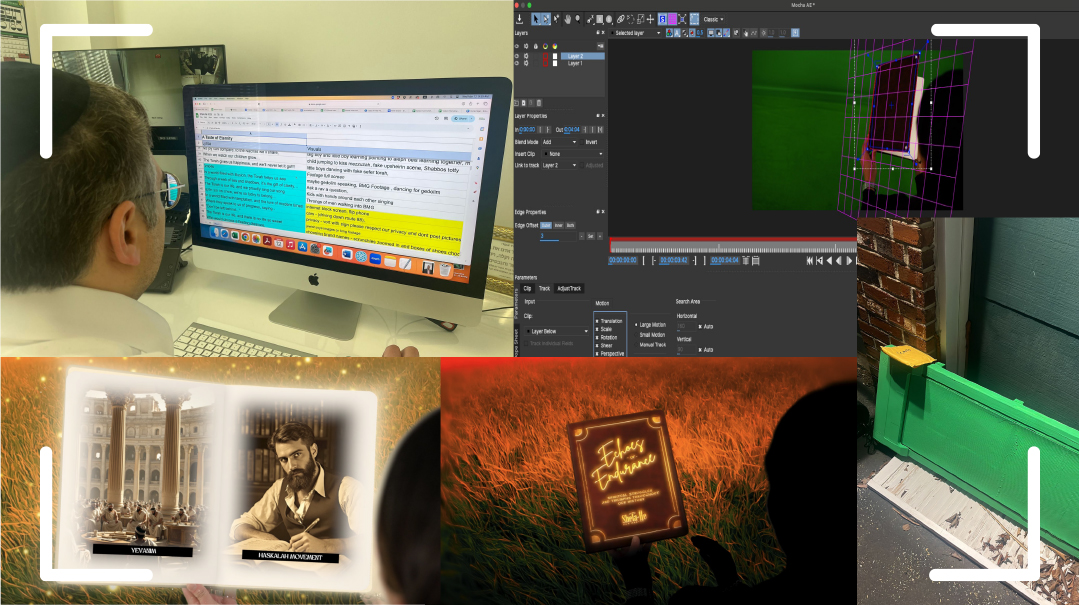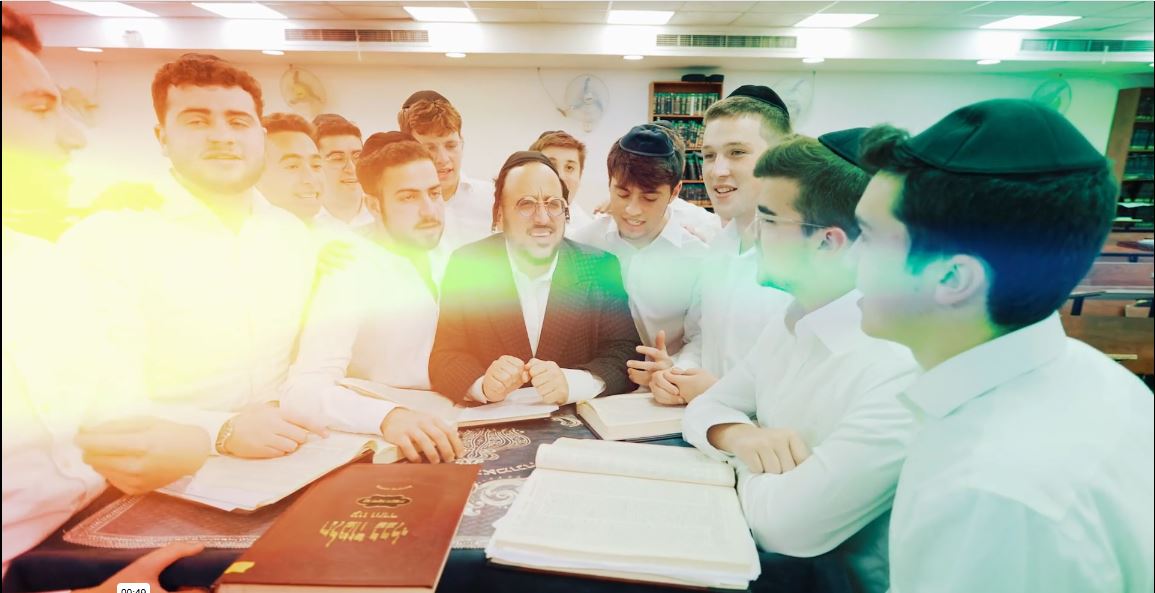Yeshiva Nishmas Hatorah (Inwood, New York)
| April 1, 2025Outtakes from a video production studio

Client: Yeshiva Nishmas Hatorah (Inwood, New York)
Objective: Create a music video for their annual campaign
Film locations: Jackson, New Jersey, and Inwood, New York
Project Deadline: March 2025
The Proposal
When we created a music video for Nishmas Hatorah’s building campaign last year, we collaborated with comedic songwriter and performer Binyomin Miller to produce something the bochurim, who get involved in the annual fundraising campaign, would be excited to share. Binyomin wrote a song called “Incomplet” (yes, the missing “e” is intentional), with whimsical lyrics describing incomplete items — half a slice of pizza, gilah and rinah without any ditzah — as a metaphor for the half-finished building the yeshivah was trying to complete. The campaign was a tremendous success, and both the yeshivah and their marketing team, ConsultWrite, knew they wanted to bring Binyomin back this year. The challenge would be building on the success of “Incomplet” without falling prey to stale-sequel syndrome.
Preproduction
Binyomin’s brainstorm was to do a song called “Complete” — not in the glaringly obvious direction of lauding the completed building, rather a more figurative approach focusing on the complete experience the yeshivah gives their talmidim. We thought it had great potential, as did ConsultWrite and Rabbi Pinchus Weinberger, rosh yeshivah of Nishmas Hatorah. Aside from the fresh angle, it would also allow us to showcase how the yeshivah gives the talmidim tools for life.
Binyomin got to work writing the lyrics, and he came to us mid-February with a draft. In order to differentiate it completely from last year’s video, he started the song with a two-paragraph backstory about… a color specialist who devoted years of his life developing a specific shade of paint.
Setting the Scene
The color the specialist had finally created was, according to Binyomin’s story, the color used in Nishmas’s new building. Our challenge was to create 60 seconds of content that would keep a viewer engaged, all while discussing creating a color. We couldn’t expect people to watch paint dry, so we decided to go all out, hiring an actor to portray a mad-scientist character, playing with all sorts of beakers and tubes in his effort to create that elusive shade. Our Amazon cart was soon filled with an aspiring chemist’s supplies: litmus test strips, ingredients for elephant toothpaste (having blue foamy liquid spilling over the beaker sells the experimentation look), dry ice, and beakers and tubes of all shapes and sizes.
We planned to set up the lab scene inside my friend’s spacious garage, but when our cinematographer, Elimelech Flamm, arrived on location, he had a better idea.
“Moshe, you see that old shed in the corner of the property? Why don’t we use that?”
He was right — the ramshackle shed would do a great job of setting the scene for our isolated old man locked up in his lab — so we relocated there.
Interestingly, though we did use actual supplies for the experimenting scene, the one thing we faked was the paint. I didn’t want to ruin any of the property (or our clothing!) so we opted for a less permanent brown liquid: chocolate syrup with some water, which looks a lot like paint.
Shimmering Strings
Aside from the lab scene and the specialty shots filmed in the yeshivah itself, we needed to film Binyomin singing the whole song in a few locations. By playing the music from beginning to end during filming, we can synchronize the different takes in editing and pick the best shots from his performances.
We did a full take in the yeshivah, but we wanted a more cinematic look as well, and Binyomin wanted something glitzy to match the sixties-era music style he had in mind when composing the song. After some back and forth with Senior Production Manager Moshe Niehaus, Elimelech ordered a backdrop of small gold squares to set a glamorous stage.
What we didn’t realize was that some assembly was required; it came as individual 12×12-inch squares. Elimelech got to work attaching them, but each connection took time. After about 30 minutes I took a break to daven Minchah, and when I returned, he was still connecting away! We had ordered enough for a complete background on the wider angle where Binyomin takes up only about a third of the screen — about 15 feet of gold — but time was ticking, and we needed to get started. I made the executive decision to build less than we had originally planned, and we embraced the new look, deliberately showing the lights and stands in the wider view to give it more of a raw set vibe.
Elimelech had done the bulk of the backdrop, but I didn’t get off so easily, because to achieve the shimmery look we had in mind, the backdrop had to be moving and reflecting the lights in different patterns. There was no wind in the indoor space, so I improvised by attaching a string to the curtain’s edge and pulling it back and forth. “Moshe, pull more!” Elimelech kept instructing during filming. “Pull harder!”
As Binyomin later quipped, “Shindler really pulled all the strings for that shoot.”
Losing Our Noodles
As fun and entertaining as the video is, if it doesn’t highlight the yeshivah, it didn’t do its job. Binyomin wrote certain lyrics with scenes of the bochurim in mind, doing their thing: learning, playing ball, eating lunch. The vision was to incorporate the humor into the everyday activities, so we could showcase the yeshivah while keeping the video engaging.
Binyomin asked us to create an overlay effect on a dozen or so key scenes to make the “complete” point in a fun way. For example, in the ball-playing scene, VFX Associate Mrs. Shayna Koppenheim designed a graphic that reads “NBA Standard Issue” over the spinning basketball (i.e., even the balls at the yeshivah are the perfect size).
VFX Associate Jeremy Lewis was the lead editor on the video, and he asked Mrs. Koppenheim to add the overlay to the scene of someone eating lunch. The plan was for it to show the calorie intake in the forkful of macaroni, but while she was working on the shot, Mrs. Koppenheim noticed one noodle had fallen off the fork while it was being lifted from the bowl. In addition to the overlay showing how many calories were in the forkful, she added a second overlay tracking the negative calorie intake on the falling macaroni, just for fun. It was an internal joke, she planned to remove it for the final; we all loved it, though, and it made the final cut.
Keep Up!
This year’s song is fast-paced, as opposed to last year’s ballad style, and because there are so many effects we want to get in, everything moves quickly. Post-Production Coordinator Usher Weldler was reviewing a draft of the video with Jeremy when he noticed the scene with a rebbi playing guitar while learning with the talmidim.
“Why are we zooming in on the gemara?” Usher asked.
“You hear how Binyomin’s singing about playing a riff [musical term for playing an instrumental piece] on his guitar?” Jeremy explained, “There’s also a second interpretation here, because the gemara is open to the Rif [Rav Yitzchak Alfasi].”
“That’s pretty funny,” Usher agreed, “but it goes by so fast. Will viewers even have time to process the joke?”
We tested it on a few people and got mixed results, because most of them got one of the meanings but not both. It was actually a great Rorschach test: Which people would get the musical “riff”erence and which would get the Talmudic one.
In the end, we did slow the shot down slightly, but we also agreed that viewers were just going to have to watch the video more than once if they wanted to get all the jokes.
Gourmet Breakfast
One of the things Binyomin wanted to highlight as “complete” is the food served in the yeshivah. He sings about the breakfast cereal, “Every Golden Crisp is lovingly toasted to perfection / And then undergoes our comprehensive fourteen-step inspection.”
We borrowed a jeweler’s loupe (or esrog-style, for those who get the second Rif-erence), and had a rebbi actually study the kernel for imperfections.
Binyomin also wanted to present typical yeshivah fare as gourmet, and I reached out to noted food and interior photographer Hudi Greenberger to professionally plate and style yeshivah lunches, transforming a tuna sandwich into the “house tuna medley on a toasted roll” in the song. We then filmed him photographing the food. The problem was that Hudi is so good at what he does it legitimately looked gourmet — which wouldn’t have the comedic effect we were aiming for. Elimelech suggested adding a plastic fork and knife, which though artfully placed, helped remind everyone not to take the scene too seriously.
Once he brought food into the song, another of Binyomin’s jokes was to refer to the cook as the mashgiach gashmi. Moshe Niehaus came up with the perfect way to showcase that visually.
“When I think of ‘status’ in the world of yeshivos, I immediately think of the mizrach vant [the eastern wall where all of the dignitaries are seated],” he said. “Let’s dress the cook in a chef’s uniform, tall white hat and all, and have him davening next to the black-hatted faculty.”
The Nishmas hanhalah was super easygoing, and we staged a Minchah just for this purpose. It probably took 30 minutes of prep for a shot that’s only a few seconds in the video, but it’s this kind of detail that makes it such a great video.
Callback
There’s always the question of when to send the video to the client. Send it too early in the process, and they might not be able to appreciate the final vision. On the flip side, sometimes initial feedback can help direct the final version.
On this particular project we went all in on the first approach. Binyomin shared just the lyrics with Rabbi Pinchus Weinberger, but we didn’t send the video until we had added all of the effects and edits, only a few days before the scheduled release.
There was a bit of nail-biting at our end as we waited for Rabbi Weinberger’s reaction. While he admitted that he could never have envisioned the final product (“shocked” was the word he used), thankfully he loved it. He did say he had to watch it several times to fully appreciate it, but that may be in part because of the speed of the jokes portrayed.
(Originally featured in Mishpacha, Issue 1056)
Oops! We could not locate your form.







